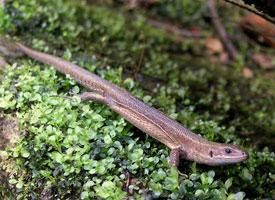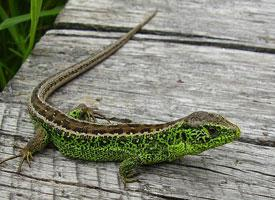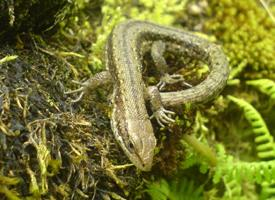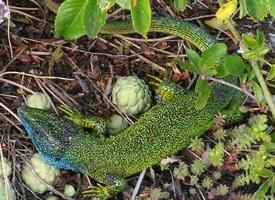
Greutăți și măsuri
| Lungime | 15 cm |
|---|
Date biologice
| Durata de viață | 15 r |
|---|---|
| Numărul de pui | 3 - 10 |
Descrierea animalului
The Viviparous lizard, scientifically named Zootoca vivipara, is a fascinating reptile species that exhibits a unique reproductive trait from which it derives its common name. Unlike the majority of reptiles that lay eggs, the Viviparous lizard gives birth to live young, a characteristic that significantly influences its habitat preferences, distribution, and behavior. This small, yet resilient lizard has adapted to a variety of climates across its range, which spans much of Europe and parts of Asia, making it a species of interest for both herpetologists and wildlife enthusiasts.Physically, the Viviparous lizard is relatively diminutive, with adults typically reaching lengths of up to 15 cm (6 inches), including the tail. They possess a slender body, a pointed snout, and relatively long, thin legs, which contribute to their agility and speed. The coloration of these lizards can vary considerably, ranging from shades of brown, grey, and green, often with a mottled or striped pattern that helps them blend into their surroundings. This camouflage is crucial for avoiding predators and for hunting their prey, which primarily consists of small invertebrates such as insects and spiders.
One of the most remarkable features of the Viviparous lizard is its reproductive strategy. In cooler climates, where egg-laying might be impeded by low temperatures, the species has evolved viviparity, meaning the females give birth to fully formed, live young. This adaptation allows the Viviparous lizard to thrive in environments that are less hospitable to other reptile species, including altitudes up to 3,000 meters (about 9,800 feet) and regions within the Arctic Circle. In warmer areas, however, some populations are ovoviviparous, with eggs hatching inside the female's body just before birth.
The habitat of the Viviparous lizard is varied but tends to favor moist, cool environments such as meadows, marshes, and the edges of forests. They are also found in heathlands, dunes, and even urban areas, demonstrating a remarkable adaptability. These lizards are diurnal, spending most of their daylight hours basking in the sun to regulate their body temperature, foraging for food, or interacting with other members of their species.
Socially, Viviparous lizards exhibit interesting behaviors, including territoriality among males, especially during the breeding season. They communicate through a combination of visual signals, such as body postures and movements, and chemical signals, using pheromones to mark territories or attract mates.
The conservation status of the Viviparous lizard is currently listed as Least Concern by the IUCN, indicating that it is not at immediate risk of extinction. However, like many species, it faces threats from habitat destruction, pollution, and climate change, which could impact its populations in the future. Conservation efforts are therefore important to ensure the continued survival of this unique and adaptable reptile species.
In conclusion, the Viviparous lizard (Zootoca vivipara) is a small but remarkable reptile that showcases the incredible adaptability of the animal kingdom. Its unique reproductive strategy, varied habitats, and the ability to thrive in a wide range of environmental conditions make it a compelling subject of study and an important species for biodiversity.
Animale similare
Fotografii noi cu animale
Top 10 animale
- Dolphin gull (Leucophaeus scoresbii)
- Diana monkey (Cercopithecus diana)
- Moustached guenon (Cercopithecus cephus)
- Greek tortoise (Testudo graeca)
- Stone loach (Barbatula barbatula)
- Galápagos tortoise (Geochelone nigra complex)
- Japanese macaque (Macaca fuscata)
- Russian tortoise (Testudo horsfieldii)
- Common flying dragon (Draco volans)
- Galápagos penguin (Spheniscus mendiculus)


